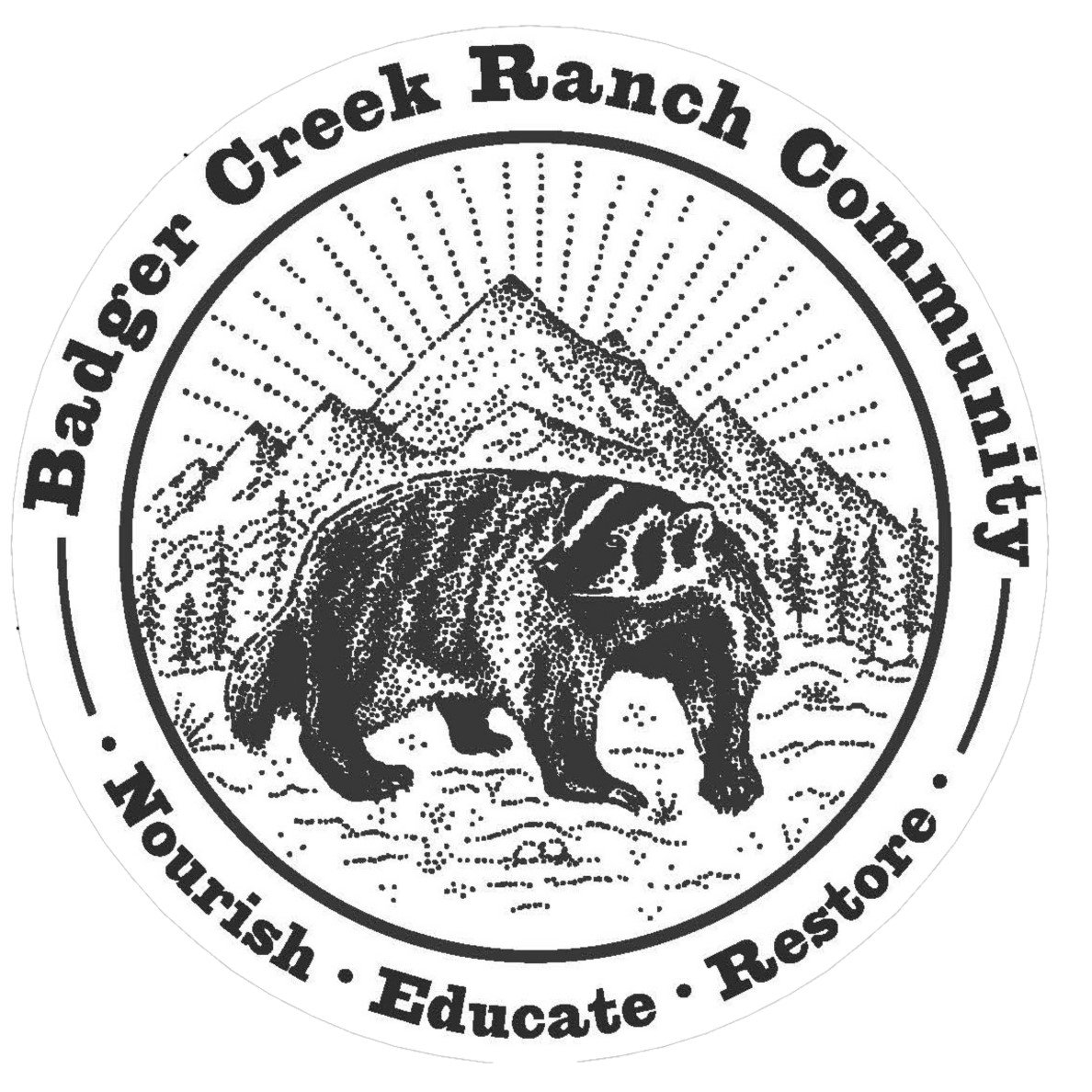Ranchers, Environmental Groups and Agencies Gather to Tell Stories About Badger Creek Restoration
At this year’s “open gate” event at Badger Creek Ranch, the public was invited to hear stories from ranchers, environmental organizations, and government agencies about efforts to bring back the health of the land along Badger Creek. “This year, it was more about the education and restoration work,” said Badger Creek Ranch steward Chrissy McFarren. “It was an opportunity to hear from the ranchers involved — what they’re seeing (as a result of environmental restoration efforts).”
Community members gather to hear stories from members of the Badger Creek Watershed Partnership
Badger Creek flows through an important 100-square-mile watershed, delivering runoff from South Park’s southwest corner to the Arkansas River ten miles below Salida, said Wendy McDermott, Executive Director of the Central Colorado Conservancy. The watershed evolved as a high-elevation tall grass prairie in a symbiotic relationship with bison herds that grazed over its vast expanse.
But when cattle were introduced beginning in the 1870s, overgrazing and development of roads that had started as wagon trails accelerated erosion, destroying cover vegetation, wetlands, and river habitat, disrupting the protective sod layer, encouraging the spread of invasive species and weeds, and lowering the water table. This led to downcutting of arroyos and streambeds and disastrous flooding, McDermott said. Today, 39,600 tons of sediment erodes into Badger Creek in a normal year. Badger Creek's streambed has dropped 15 to 20 feet from where it was 120 years ago, disconnecting the stream channel from the floodplain and destroying 60 percent of the watershed's wetlands.
To address these problems, a coalition of landowners, government agencies, and environmental groups formed the Badger Creek Watershed Partnership in 2017. It is working to restore the health of the Badger Creek watershed.
The family of Brett and Ken McMurray joined the Badger Creek Watershed Partnership. The McMurrays have been ranching here for five generations, raising cattle whose bloodlines go back to the first cattle that were introduced here in the 1870s. “Having willing private landowners from the ranching community embrace this with so many partners is unheard of,” McDermott said.
“When they first came to us, we were a little skeptical,” Brett McMurray said. “After the first year, we had seen what they had done, and we were like, ‘Oh, this is amazing’.”
“We’ve put our differences aside towards a goal (improving land health) that has been so rewarding,” Ken McMurray added. “We’ve seen success . . . so it’s really exciting . . . We've seen an amazing improvement in the last handful of years.”
Ranchers: Chrissy McFarren (steward of Badger Creek Ranch), Brett McMurray and Ken McMurray
“Agriculture is tough now,” said Brady Everett, another rancher who joined the coalition. “It’s a constant struggle . . . There are fewer than 20 families doing agriculture in Chafee County, and the vast majority have been doing it since 1870. They are doing it because they love it. Nobody loves the ground more than they do . . . You can't appreciate how important these collaborations are — you can feel like it’s just you against the world, and why bother? It gives you a new lease on life.”
To date, the Badger Creek Watershed Partnership has restored ten miles of Badger Creek and its tributaries by creating mini-dams of sod to slow and spread creek waters, reducing flood damage and capturing sediments to raise the level of the streambed, reconnecting it with its floodplain, McDermott said. This creates wetlands along the creek that act like a sponge, cleansing the water and releasing it slowly so there is a more consistent streamflow to support vegetation and wildlife. Volunteers have planted 16,000 willows that help maintain creek banks and create habitat to attract beaver.
The coalition is working with the ranchers — Badger Creek Ranch, the McMurrays, and the Everetts — to add fences, water troughs, and electronic collars that prevent cattle from damaging the creek, its banks, and wetlands. Cattle are moved frequently so that soils recover, mimicking how the movements of bison herds nourished the soil, a technique known as regenerative grazing.
The result is an overall healthier environment. The condition of soils and plant cover is improving. “Monitoring shows it works,” McDermott said.
Lindsey Brant, Stewardship Trust Manager for the Colorado State Land Board, gestures toward a section of Badger Creek that has been restored to lush wetlands by reshaping the streambed to mimic the action of beavers, so that waters are slowed and spread, and by taking measures that keep cattle out of the streambed for most of the year.
Auditing by the National Audubon Society has found that cattle grazing at Badger Creek Ranch is creating an increasingly bird-friendly habitat. “At Badger Creek Ranch, short periods of high-intensity grazing provide patches of short cover favored by the Horned Lark and Vesper Sparrow, while other areas can be rested from grazing for long periods, leading to the higher plant structure preferred by species like the Savannah Sparrow,” said Dusty Downey, Conservation Ranching Manager for Audubon Rockies, the National Audubon Society's regional office.
“This is the effort that will change things,” said Philip (JP) Klavon, hydrologist for the U.S. Forest Service. He urged people to buy their meat and produce from ranchers that are doing regenerative ranching.
“The ranchers are preserving much more than you can imagine,” said Ken McMurray. “Ranchers are our greatest land stewards and conservationists,” added McFarren. “They are preserving the health of our public lands.”



